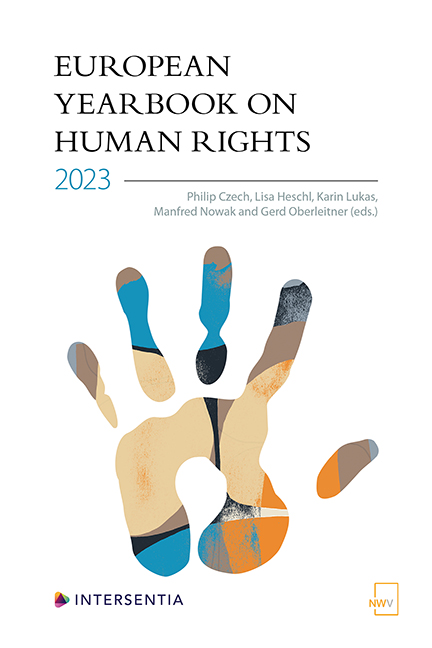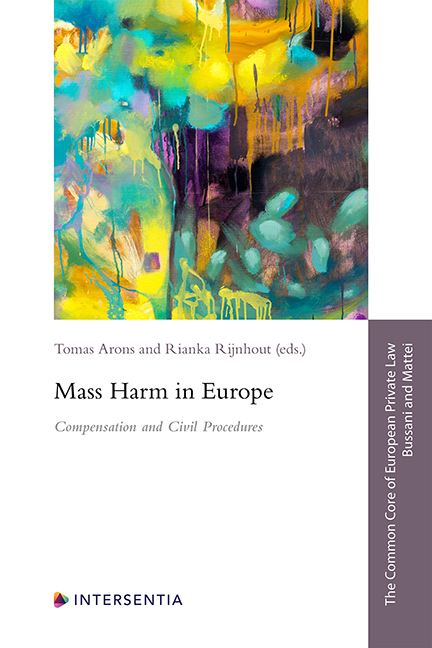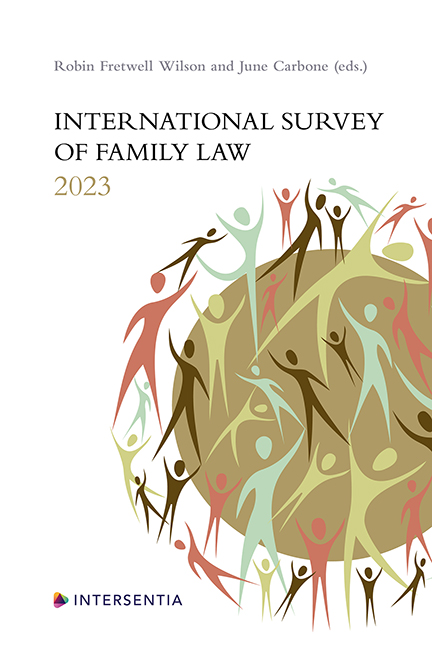Refine listing
Actions for selected content:
8255 results in Intersentia
Comparative Introduction to the Role of Precedent in Private Law
-
-
- Book:
- The Role of Legal Precedent in Private Law
- Published by:
- Intersentia
- Published online:
- 18 September 2025
- Print publication:
- 21 June 2024, pp 1-26
-
- Chapter
- Export citation
Precedent in French Private Law
-
-
- Book:
- The Role of Legal Precedent in Private Law
- Published by:
- Intersentia
- Published online:
- 18 September 2025
- Print publication:
- 21 June 2024, pp 89-112
-
- Chapter
- Export citation
Bibliography
-
- Book:
- Cross-Border Child Relocation in the EU
- Published by:
- Intersentia
- Published online:
- 16 September 2025
- Print publication:
- 21 May 2024, pp 275-296
-
- Chapter
- Export citation
Chapter 5 - Child Relocation and Restriction of Free Movement in EU Law
-
- Book:
- Cross-Border Child Relocation in the EU
- Published by:
- Intersentia
- Published online:
- 16 September 2025
- Print publication:
- 21 May 2024, pp 117-156
-
- Chapter
- Export citation
Chapter 7 - Child Relocation and National Encounters with EU Law
-
- Book:
- Cross-Border Child Relocation in the EU
- Published by:
- Intersentia
- Published online:
- 16 September 2025
- Print publication:
- 21 May 2024, pp 197-256
-
- Chapter
- Export citation
Chapter 4 - Child Relocation and Fundamental Rights in Europe
-
- Book:
- Cross-Border Child Relocation in the EU
- Published by:
- Intersentia
- Published online:
- 16 September 2025
- Print publication:
- 21 May 2024, pp 75-116
-
- Chapter
- Export citation
Chapter 3 - EU Legal Competence and Harmonisation Prospects
-
- Book:
- Cross-Border Child Relocation in the EU
- Published by:
- Intersentia
- Published online:
- 16 September 2025
- Print publication:
- 21 May 2024, pp 55-74
-
- Chapter
- Export citation
Contents
-
- Book:
- Cross-Border Child Relocation in the EU
- Published by:
- Intersentia
- Published online:
- 16 September 2025
- Print publication:
- 21 May 2024, pp vii-x
-
- Chapter
- Export citation
Index
-
- Book:
- Cross-Border Child Relocation in the EU
- Published by:
- Intersentia
- Published online:
- 16 September 2025
- Print publication:
- 21 May 2024, pp 297-301
-
- Chapter
- Export citation
Chapter 8 - Conclusions
-
- Book:
- Cross-Border Child Relocation in the EU
- Published by:
- Intersentia
- Published online:
- 16 September 2025
- Print publication:
- 21 May 2024, pp 257-274
-
- Chapter
- Export citation
Chapter 1 - Introduction
-
- Book:
- Cross-Border Child Relocation in the EU
- Published by:
- Intersentia
- Published online:
- 16 September 2025
- Print publication:
- 21 May 2024, pp 1-28
-
- Chapter
- Export citation
List of Cases
-
- Book:
- Cross-Border Child Relocation in the EU
- Published by:
- Intersentia
- Published online:
- 16 September 2025
- Print publication:
- 21 May 2024, pp xi-xviii
-
- Chapter
- Export citation
Acknowledgments
-
- Book:
- Cross-Border Child Relocation in the EU
- Published by:
- Intersentia
- Published online:
- 16 September 2025
- Print publication:
- 21 May 2024, pp v-vi
-
- Chapter
- Export citation
Chapter 6 - Child Relocation and the Contextual Influence of EU Law
-
- Book:
- Cross-Border Child Relocation in the EU
- Published by:
- Intersentia
- Published online:
- 16 September 2025
- Print publication:
- 21 May 2024, pp 157-196
-
- Chapter
- Export citation
Chapter 2 - Setting the Scene: Child Relocation, Best Interests of the Child and the EU Context
-
- Book:
- Cross-Border Child Relocation in the EU
- Published by:
- Intersentia
- Published online:
- 16 September 2025
- Print publication:
- 21 May 2024, pp 29-54
-
- Chapter
- Export citation
Frontmatter
-
- Book:
- Cross-Border Child Relocation in the EU
- Published by:
- Intersentia
- Published online:
- 16 September 2025
- Print publication:
- 21 May 2024, pp i-iv
-
- Chapter
- Export citation
List of Legislation and Other Instruments
-
- Book:
- Cross-Border Child Relocation in the EU
- Published by:
- Intersentia
- Published online:
- 16 September 2025
- Print publication:
- 21 May 2024, pp xix-xxii
-
- Chapter
- Export citation

European Yearbook on Human Rights 2023
-
- Published by:
- Intersentia
- Published online:
- 04 April 2024
- Print publication:
- 30 November 2023

Mass Harm in Europe
- Compensation and Civil Procedures
-
- Published by:
- Intersentia
- Published online:
- 03 April 2024
- Print publication:
- 27 October 2023

International Survey of Family Law 2023
-
- Published by:
- Intersentia
- Published online:
- 03 April 2024
- Print publication:
- 31 October 2023
